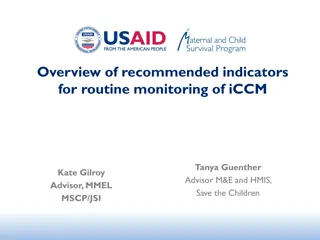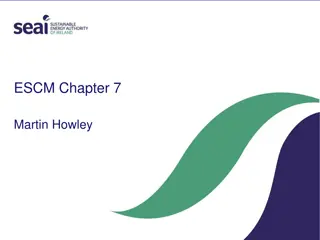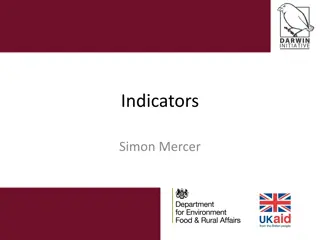Analysis of Indicators 9 & 10 in Special Education Representation
The indicators 9 and 10 focus on the disproportionate representation of racial and ethnic groups in special education programs. Specifically, Indicator 9 looks at the overall disproportionate representation of groups eligible for special education, while Indicator 10 examines the disproportions within specific disability categories. The Weighted Risk Ratio and Alternative Risk Ratio calculations provide insights into the comparative risks faced by Hispanic students in special education compared to other racial/ethnic groups at both district and state levels. Districts are flagged for disproportionate representation if the criteria are met over three consecutive years.
Download Presentation

Please find below an Image/Link to download the presentation.
The content on the website is provided AS IS for your information and personal use only. It may not be sold, licensed, or shared on other websites without obtaining consent from the author. Download presentation by click this link. If you encounter any issues during the download, it is possible that the publisher has removed the file from their server.
E N D
Presentation Transcript
Indicators 9 & 10 Indicator 9: the overall disproportionate representation of racial and ethnic groups identified as eligible for special education Indicator 10: disproportionate representation of racial and ethnic groups within specific disability categories. 2 Massachusetts Department of Elementary and Secondary Education
Weighted Risk Ratio How many times greater is a Hispanic students risk of being identified as eligible for special education and related services for a Specific Learning Disability (SLD) in comparison with all other racial/ethnic groups in the district? [(1-State composition of Hispanic Students) * District Risk for Hispanic SLD Students] (Divided by) [(State composition of African American Students * District Risk for African American SLD Students) + (Added to) (State composition of Asian Students* District Risk for Asian SLD Students) + (Added to) (State composition of Native American Students * District Risk for Native American SLD Students) + (Added to) (State composition of Native Hawaiian Students * District Risk for Native Hawaiian SLD Students) + (Added to) (State composition of Multiracial Students * District Risk for Multiracial SLD Students) + (Added to) (State composition of White Students * District Risk for White SLD Students)] 3 Massachusetts Department of Elementary and Secondary Education
Alternative Risk Ratio How many times greater is a Hispanic students risk of being identified as eligible for special education and related services for a Specific Learning Disability (SLD) in comparison with all other racial/ethnic groups in the state? (District Risk for Hispanic SLD Students) (Divided by) [(State Risk for African American SLD Students) + (Added to) (State Risk for Asian SLD Students) + (Added to) (State Risk for Native American SLD Students) + (Added to) (State Risk for Native Hawaiian SLD Students) + (Added to) (State Risk for Multiracial SLD Students) + (Added to) (State Risk for White SLD Students)] 4 Massachusetts Department of Elementary and Secondary Education
Indicators 9 & 10 Indicator 9: Districts are flagged for disproportionate representation if, for three consecutive years, the district exhibits a weighted or alternative risk ratio of 3.0 or greater for possible over-representation. Indicator 10: Districts are flagged for disproportionate representation in a specific disability category if, for three consecutive years, the district exhibits a weighted or alternative risk ratio of 4.0 or greater for possible over- representation 5 Massachusetts Department of Elementary and Secondary Education
Indicators 9 & 10. All districts flagged by way of this quantitative analysis are required to send policies, practices and procedures (PPPs) to the Department. IDEA requires the Department to determine whether the disproportionate representation is due to inappropriate identification of students for special education services by reviewing the district s PPPs regarding disability determination and eligibility determination. If it is determined that PPPs are inappropriate and are contributing to the disproportionate representation, corrective action procedures are required. All flagged districts are invited to participate in equity in special education PD and TA offered by SEPP 6 Massachusetts Department of Elementary and Secondary Education
Indicator 9: Disproportionality SPP-APR Measurement: Percent of districts with disproportionate representation of racial and ethnic groups in special education and related services that is the result of inappropriate identification. oTarget: 0% Data Source: SIMS 7 Massachusetts Department of Elementary and Secondary Education
Indicator 10: Disproportionality in specific disability categories SPP-APR Measurement: Percent of districts with disproportionate representation of racial and ethnic groups in specific disability categories that is the result of inappropriate identification. oTarget: 0% Data Source: SIMS 8 Massachusetts Department of Elementary and Secondary Education























